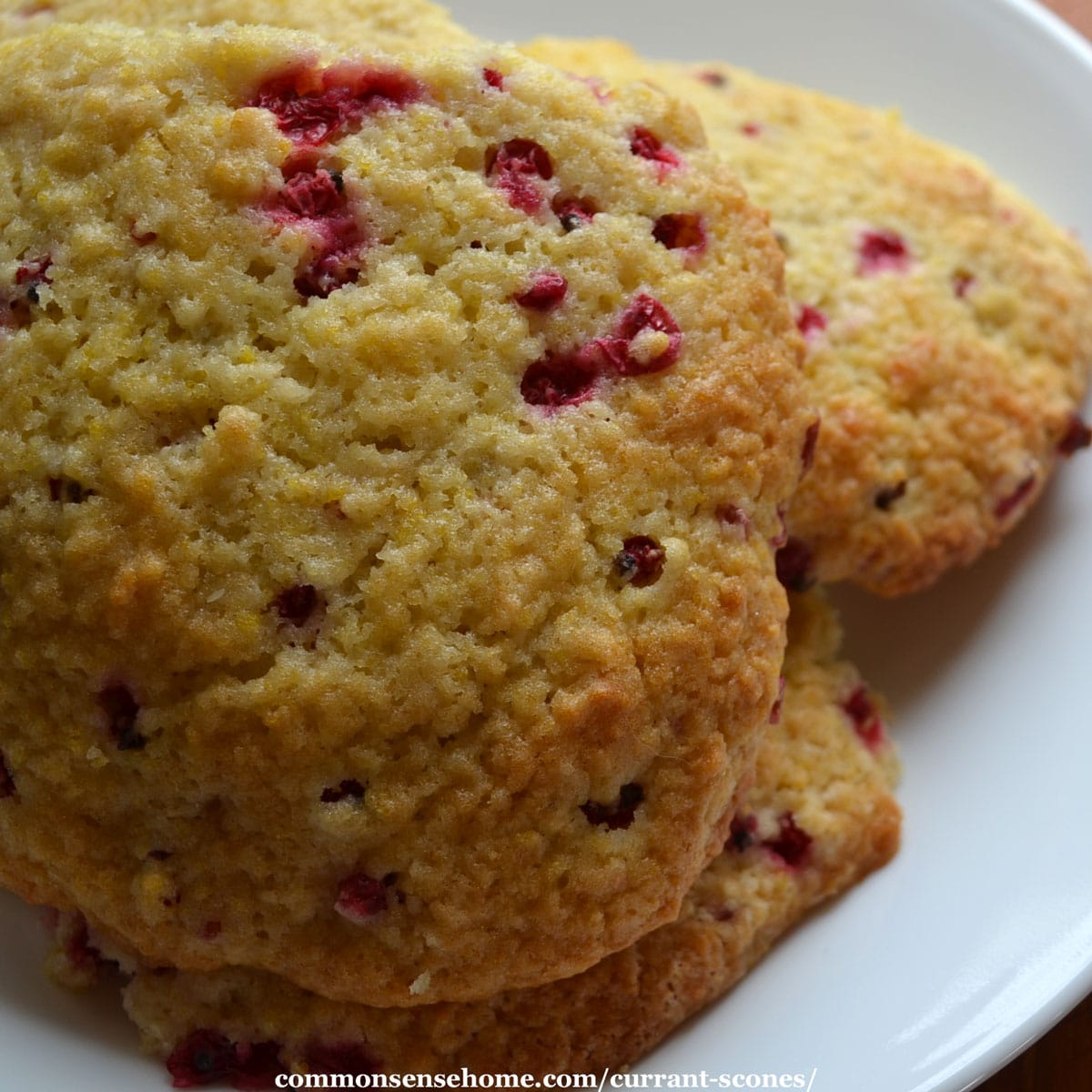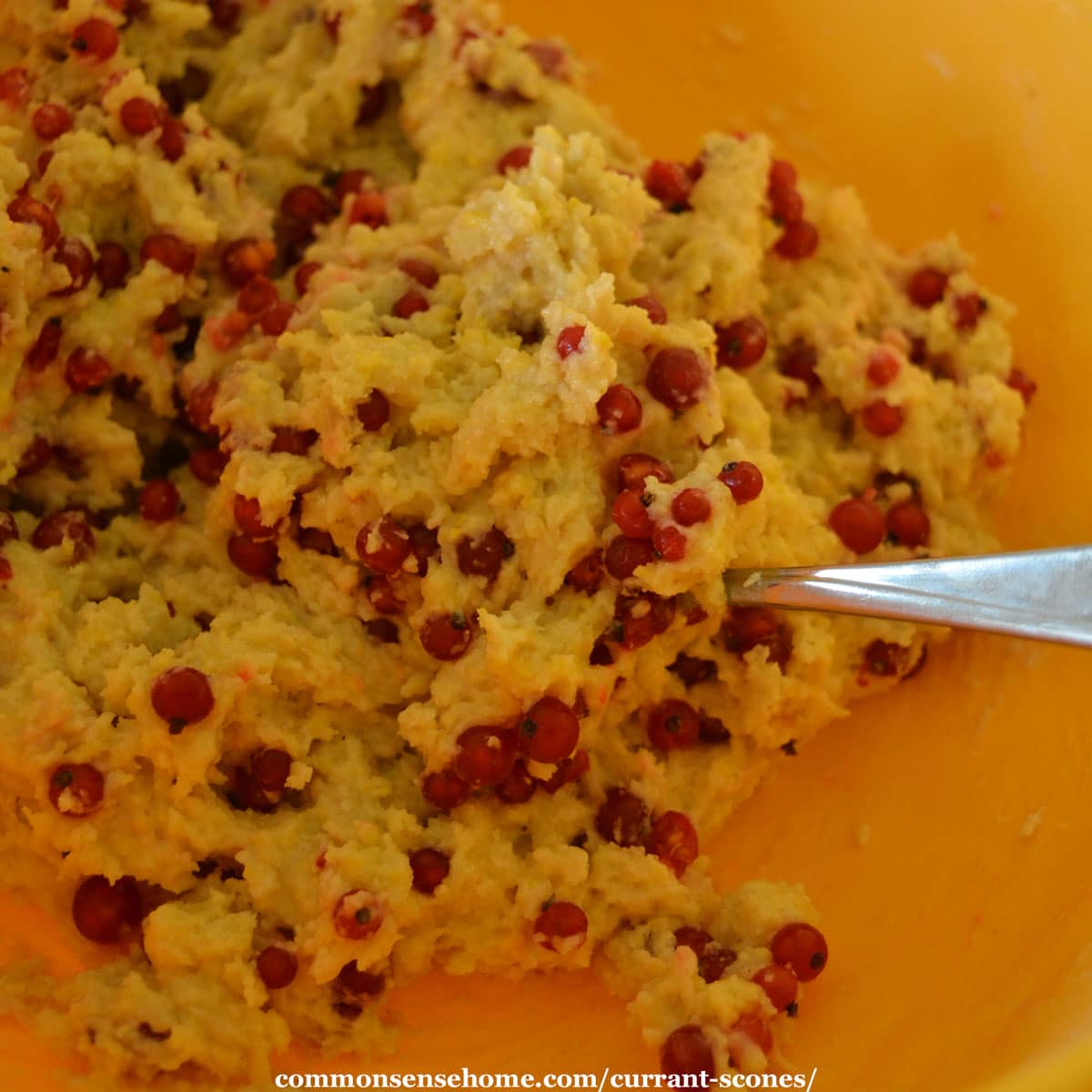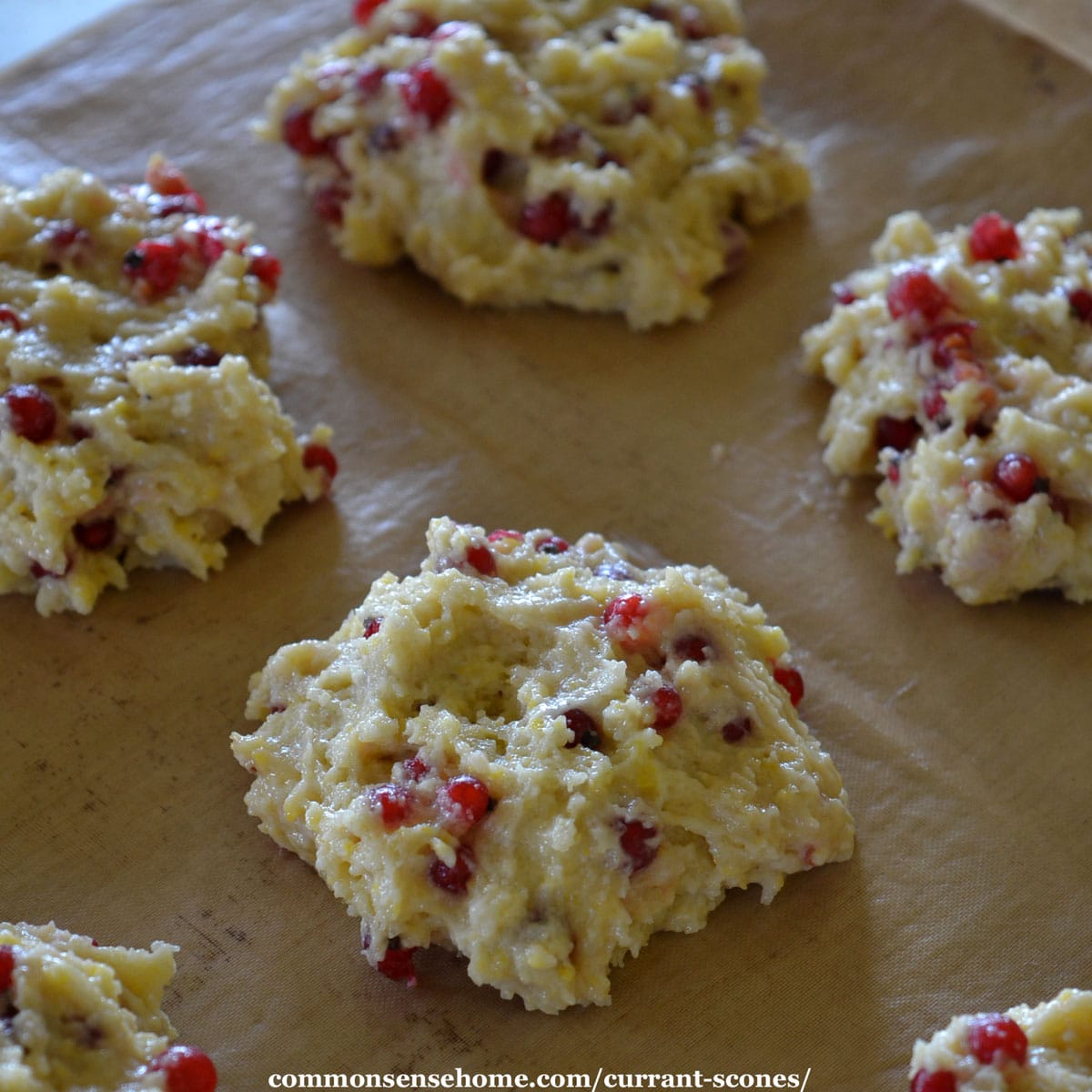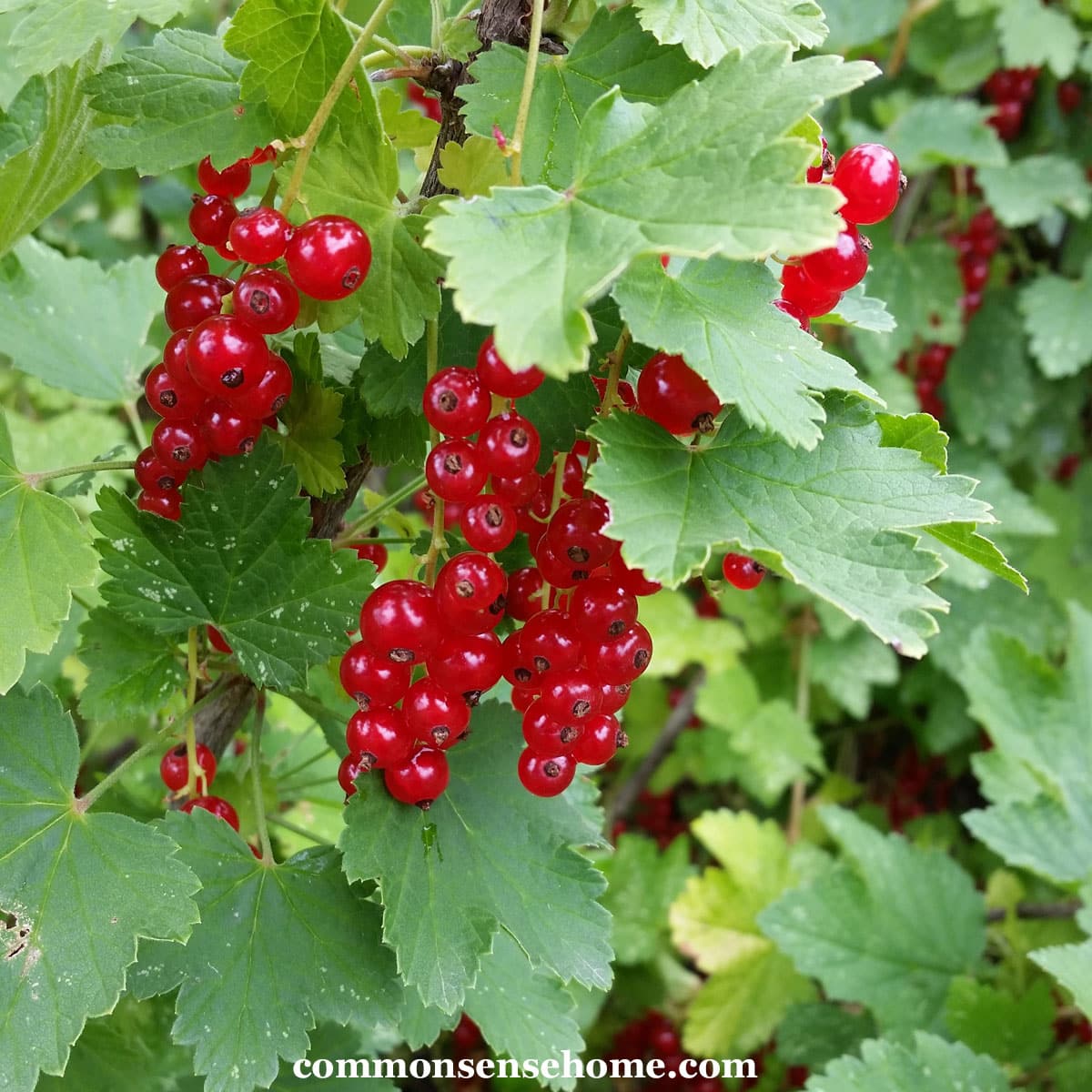Currant Scones (Made with Fresh Currants)
This post may contain affiliate links. Read my full disclosure here.
These currant scones are light and delicate, a perfect way to highlight the tartness of fresh currants. We’ll share the recipe, plus tips for working with fresh currants.

We inherited several currant bushes from our neighbors, so each year I try out some new recipes. We started with currant jelly, and then tried currant apple spread. I tried a bar recipe with a layer of fruit, but didn’t care for the texture.
After sorting through several scone recipes, I tweaked one and came up with these scones. I poured in a little bit too much milk and they spread more than expected. I’ve adjusted the recipe to reduce the spread.
We are out of fresh currants so I can’t get new photos, but the recipe was too good not to share.
Currant Scones
These are a drop biscuit style scone rather than a roll and cut dough, so they are quick to make. Keep all your ingredients cool for lighter scones.
Ingredients
- 1 cup all purpose flour
- 1/2 cup sugar
- 2 teaspoons baking powder
- 3 tablespoons butter
- 1 egg
- 1/2 teaspoon almond extract
- 1 tablespoon milk
- 1/2 cup fresh currants
Directions
Preheat oven to 425℉.
In a medium bowl, mix together dry ingredients (flour, sugar, baking powder). Cut in the butter with a pastry blender.
Add the egg, almond extract, and milk to the flour mixture. Mix until just blended – don’t overwork the dough. Gently stir in currants.

Line a baking sheet with parchment paper. Drop large tablespoons of the currant scone batter onto the prepared baking sheet. Leave at least an inch between scones to allow them room to spread.

If you like, you can sprinkle the scones with granulated sugar before baking for a sweeter treat.
Bake for 12 to 15 minutes, until golden brown around the edges. Remove from oven and place on wire rack to cool.
Once cooled, store in an airtight container. These are best eaten within a few days because the currants are so moist.
Tips for Working with Currants
Our red currants are old farm plants, probably as old as I am (or older). The fruit is on the small side, but the flavor is good and the plants are tough. They produced a good harvest this year in hot, dry conditions where other plants failed.
Would you like to save this?
When we pick currants, I leave them on the stem (unwashed) and store them in the refrigerator in an open container until we’re ready to use them. Stored this way, our fresh currants kept several weeks, making them one of the longest lasting fresh berries.
Currants grow in clusters, and each fruit has a tiny “tail” at the blossom end. I don’t trim the tail off before baking with the currants, but you may want to remove it with larger fruits. (They’ll have a bigger tail.)

Currants also have noticeable seeds, which may turn off some fussy eaters. I like to use whole currants in moderation in recipes, or make currant puree. Currant puree is great, because you don’t need to pick the berries off the stem. You can throw the berries in the pot, stem and all, cook them down, and then strain.
The finished puree works wonderfully to blend with other fruits in jam making. By themselves, currants are quite tart and most recipes with them call for plenty of sugar. In a fruit blend, you can use less sugar, plus they often enhance the flavor of the other fruit.
Currants (especially the stems) are naturally high in pectin and acidity.
We’ve blended them with red raspberries, and if you didn’t know there were currants in the mix, you probably wouldn’t guess. It was a good way to stretch a small picking of raspberries into enough for a batch of jam. When mixed with juneberries, they added a great counterbalance to the mild flavor of the juneberries.
See “Currants – Growing, Harvesting, and Uses” for more currant tips.
Substitutions
If you don’t have currants, you can substitute blueberries, raisins, dried currants, or dried cranberries. You may want to add a bit more milk when using dried fruit. If you don’t have almond extract, try lemon, or vanilla.
It’s fine to use any color of currant in your currant scones – red, black, pink, or white. All the fruits are good, but you will notice flavor differences.
A note about fresh currants versus dried currants. Most dried currants are actually Zante currants, which are a type of small dried grape (raisin). You may sometimes find dried black currants.
Red currants usually have smaller fruit. I’ve dehydrated them, and the same skin that helps them last in the refrigerator also makes them take a long time to dry.
Print Friendly Recipe
Use the recipe format below for easy printing.
PrintCurrant Scones (Made with Fresh Currants)
Tender and delicious, these berry scones pair perfectly with a cup of tea and come together in minutes.
- Prep Time: 10 minutes
- Cook Time: 15 minutes
- Total Time: 25 minutes
- Yield: 8 scones 1x
- Category: quickbread
Ingredients
- 1 cup all purpose flour
- 1/2 cup sugar
- 2 teaspoons baking powder
- 3 tablespoons butter
- 1 egg
- 1/2 teaspoon almond extract
- 1 tablespoon milk
- 1/2 cup fresh currants
Instructions
Preheat oven to 425℉.
In a medium bowl, mix together dry ingredients (flour, sugar, baking powder). Cut in the butter with a pastry blender.
Add the egg, almond extract, and milk to the flour mixture. Mix until just blended – don’t overwork the dough. Gently stir in currants.
Line a baking sheet with parchment paper. Drop large tablespoons of the currant scone batter onto the prepared baking sheet. Leave at least an inch between scones to allow them room to spread.
Bake for 12 to 15 minutes, until golden brown around the edges. Remove from oven and place on wire rack to cool.
Once cooled, store in an airtight container. These are best eaten within a few days because the currants are so moist.
Notes
If you like, you can sprinkle the scones with granulated sugar before baking for a sweeter treat.

More Made from Scratch Recipes
We have dozens of recipes on the site, from entrees to desserts. You may also enjoy:



Can’t wait to try this. I planted my currants 2 summers ago and this is the first year it produced any currants. They didn’t produce enough to survive any trips into the house. But next year – I’m on it!
We really liked this combination. I tried making the berries into a fruit filling, but the seeds were a little overwhelming. A friend sprinkled some currants on top of brownies for color and tartness. I want to try that next year.